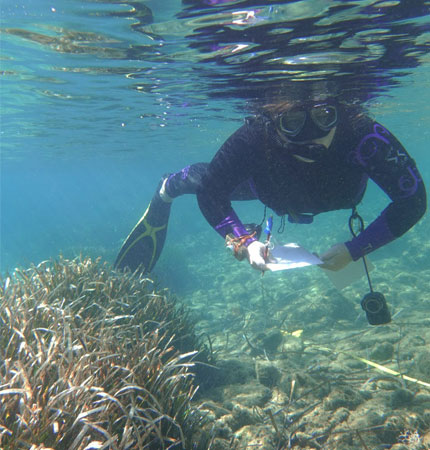Multi-stressor impact of high temperature and low salinity on Alaria esculenta
Observing physiological and metabolic changes in gametophytes and sporophytes of Alaria esculenta when exposed to increased temperature and decreased salinity.
Kelps serve as vital ecosystem engineers, providing essential ecosystem services, including carbon sequestration and offering a habitat to many animal species. However, climate change-driven marine heatwaves are triggering latitudinal shifts and population declines, particularly in the northeast Atlantic (Veenhof et al. 2024, Macias et al. 2025). Alaria esculenta is one of the temperate kelp species found abundantly in the UK and commercially cultivated for its applications in food, feed, biostimulants and bioactive compounds. Recent studies showed that A. esculenta populations are declining across the southern edge of its range and moving poleward due to climate change effects (Schimpf et al., 2022, Veenhof et al. 2024, Hill et al. 2025).
As cold-affiliated species, A. esculenta is highly sensitive to rising temperatures and reduced salinity, resulting from increased storms and rainfall—both of which threaten the survival and growth of both gametophytes and sporophytes, ultimately diminishing their role in net-zero carbon contributions (Veenhof et al. 2024, Drakard et al. 2025). Both higher temperature and hypo-salinity also decrease the photosynthetic capacity and delays recruitment of sporophytes leading to decrease in the rate of reproduction (Schimpf et al., 2022). There is a metabolic shift to maintain osmotic balance particularly under hyposaline conditions, limiting the energy available for photosynthesis and reducing biomass yield (Li et al. 2019, Drakard et al. 2025). One such mechanism is the accumulation of mannitol, which acts as an antioxidant and osmoprotectant in hyposaline conditions. In general, kelps under stress accumulate mannitol, which acts as an antioxidant and osmo-protectant. It has been found that mannitol associated genes are upregulated in hyposalinity and high temperature stress in gametophytes but downregulated in sporophytes (Chi et al. 2020) depicting distinct defense mechanisms in different life cycle stage. Interestingly, gametophytes are more vulnerable to temperature and salinity changes than their sporophytes but very little is known about their distinct stress physiological and biochemical changes under multi-stressor drivers.
Key objectives
1. Evaluate the cumulative effects of increased temperature and reduced salinity on the growth, fecundity, and physiological processes—including photosynthetic and respiratory activities—of A. esculenta gametophytes and sporophytes.
2. Investigate the impact of high temperature and low salinity on the biochemical composition of A. esculenta gametophytes and sporophytes, identifying key molecular and metabolic shifts.
3. Examine the role of antioxidant enzymes in mitigating the physiological stress induced by multi-stressor conditions in A. esculenta, assessing their contribution to resilience and adaptive responses.
4. Evaluate the relative limitations imposed by salinity, temperature, and their combined effects on kelp growth to identify the primary environmental constraint.
Supervisors: Drs Puja Kumari, Kati Michalek and Reina Veenhof
Start date: October 2025
Funder: self-funded (student loan)
Relevant qualifications
2023 BSc (Hons) Marine and Freshwater Biology.
